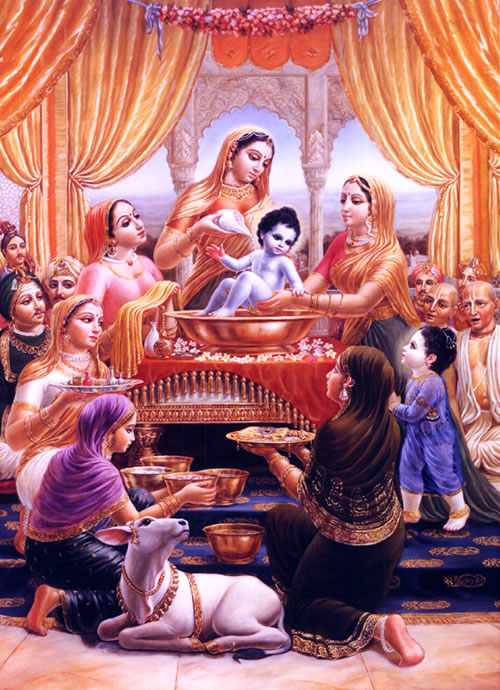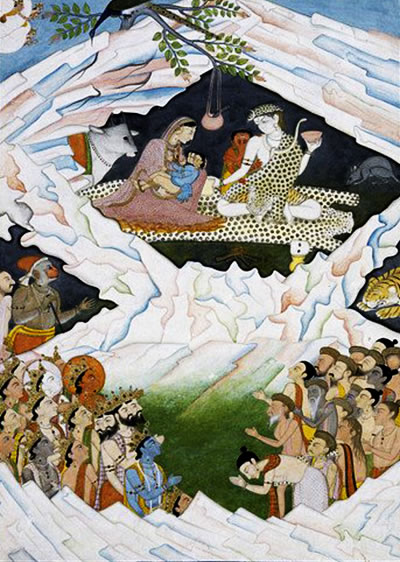Time of Birth
Q. Hare Krsna! I would like to ask a question regarding that topic. My God-sister will give birth to a son (could be any moment), and we have no idea which time she should take as "time of birth." She did ask some astrologers, but she got different answers. Looks like there are different opinions.
A. Thank you for asking this question.
There are -- as with everything else in the age of Kali -- several opinions on this subject -- otherwise what would people quarrel over if there were not differing opinions? (-:
Some say the time of birth is when the body first appears, others when the baby first cries, the umbilical cord is cut, etc.
About 25 years ago I read an article in the Astrological Magazine that clearly defined the time of birth as "bhu patana" or when the child touched the earth. In Satya Jatakam (1.6), Satyacharya writes that there are three moments which can be taken as birth time:
1) Adhana lagna the moment of conception
2) Siro darshana lagna when the head becomes visible
3) Bhu patana lagna when the body touches the earth
Satyacarya goes on to state that the first two moments are hard to ascertain and that one should, therefore, take the third one only.
The moment of conception is hard to ascertain because even if one knows the exact moment that the seed was deposited in the womb that is not the moment of conception because it takes some time for the sperm to find the ovum; it could take hours and sometimes even a day or two, because the sperm can live from 3-5 days inside the woman's body.
The wife of one friend of mine told me that when they planned to have a child they were in Vrndavan and had the garbhodhana samskara there. Then she went on to say that the next day when she and her husband went to Radhakunda she felt a sudden change -- that something had entered into her body just as she arrived at Radhakunda. She was certain that was when the soul of the child she later bore was conceived. Unfortunately she was not in a position to record that time or even think to do it. If she had that would have been the Adhana lagna.
As for the visibility of the head being difficult to ascertain I am not in a position to comment on that never having been in attendance to a child birth. I will take the sage's word on it.
Bhu patana referred to the fact that in earlier days women in India didn't lay down to give birth but squatted holding on to a rope or other means of support during the labor. The same vayu that pushes out stool and urine is also responsible for parturition. Hence when the child actually came out of the body it would touch the earth and that was recorded as the time of birth.
Considering that most women have babies in maternity wards where they lay down on a bed, though there are other birthing methods such as sitting in warm salt water tank and other such "natural" methods, we have to adjust the principle to the present situation. The basic principle to consider is that the time when the baby's body wholly leaves the mother's body is the time of birth.
So if the head shows first then the birth time is when the feet come out. If the feet show first it is when the head comes out. If there are other options other than these two (I am not an obstetrician) then apply the principle that when the rest of the body comes out that is the birth time. It should be recorded as carefully as possible.
The same applies to a C-section.
Subscribe to our mailing list. And get our intermittent newsletter and updates to this site.
I have coached several people in this way and they were able to record the time of birth up to the second by first synchronizing their time piece with an atomic clock or other accurate time source. Better not to depend on the hospital to do this if you want accuracy down to the second. For accuracy within a minute most cell phones today automatically update the time but they are only accurate to within a minute, but that should be good enough for most people.
My nephew's birth time is known to the second.
I hope this helps.
Yours in the service of Srila Prabhupada
Shyamasundara Dasa

